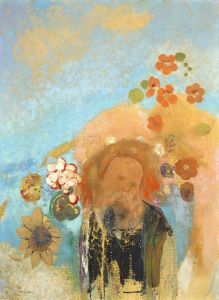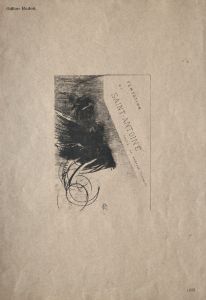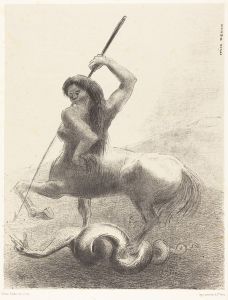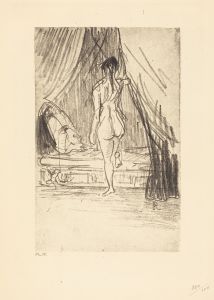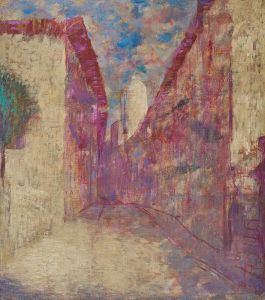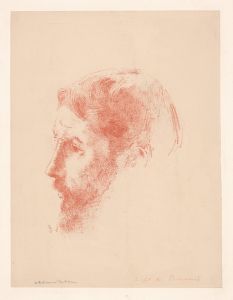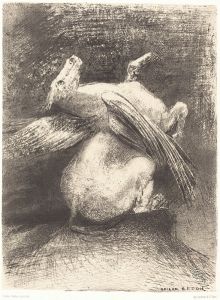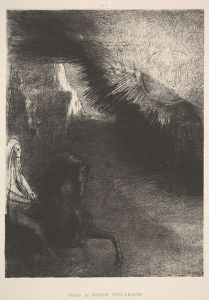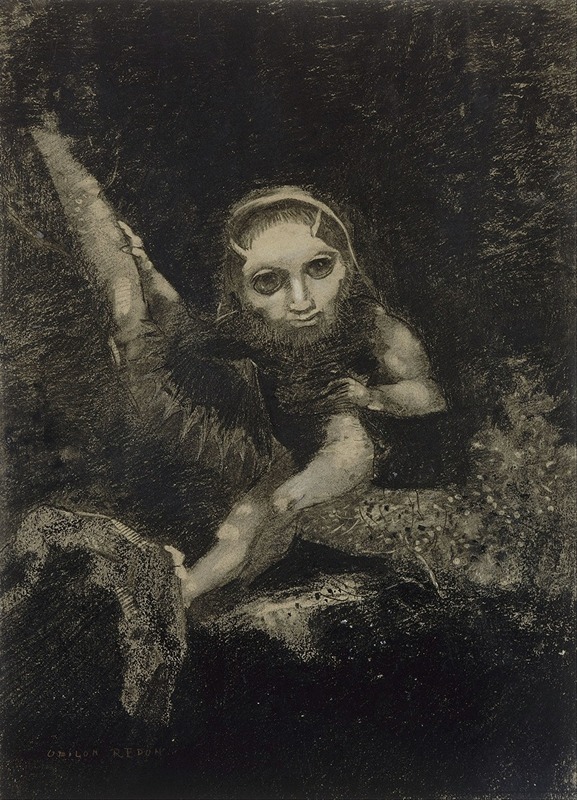
Caliban
A hand-painted replica of Odilon Redon’s masterpiece Caliban, meticulously crafted by professional artists to capture the true essence of the original. Each piece is created with museum-quality canvas and rare mineral pigments, carefully painted by experienced artists with delicate brushstrokes and rich, layered colors to perfectly recreate the texture of the original artwork. Unlike machine-printed reproductions, this hand-painted version brings the painting to life, infused with the artist’s emotions and skill in every stroke. Whether for personal collection or home decoration, it instantly elevates the artistic atmosphere of any space.
Odilon Redon, a French symbolist artist, created the artwork "Caliban" as part of his exploration of literary and mythological themes. The piece is inspired by the character Caliban from William Shakespeare's play The Tempest. Caliban, a complex figure in the play, is often interpreted as a symbol of primal instincts, the natural world, or colonial subjugation. Redon’s interpretation of Caliban reflects his interest in the mysterious and the fantastical, which were central to his artistic vision.
Redon was known for his use of dreamlike imagery and his ability to evoke emotion through symbolic and often surreal representations. "Caliban" exemplifies these qualities, as it portrays the character in a way that emphasizes his otherworldly and grotesque nature. The artwork is rendered in Redon's signature style, which often combines elements of realism with imaginative and fantastical details. His use of dark tones and subtle contrasts creates a haunting atmosphere, drawing the viewer into the enigmatic world of the subject.
The exact medium and date of creation for "Caliban" are not definitively documented, but it is consistent with Redon’s body of work, which includes drawings, lithographs, and paintings. Much of his art was influenced by literature, philosophy, and his own introspective nature. Redon’s fascination with Shakespearean characters is evident in several of his works, and "Caliban" is a notable example of his ability to reinterpret literary figures through his unique artistic lens.
As with many of Redon’s works, "Caliban" invites multiple interpretations and reflects the artist’s broader interest in exploring the boundaries between the real and the imaginary. The piece is often discussed in the context of Symbolism, a movement that sought to express ideas and emotions through symbolic imagery rather than direct representation. Redon’s contribution to this movement has solidified his place as a key figure in late 19th and early 20th-century art.
"Caliban" is housed in a private collection or museum, though specific details about its current location are not widely available. The artwork continues to be studied and appreciated for its evocative portrayal of one of Shakespeare’s most enigmatic characters and for its place within Redon’s oeuvre.





